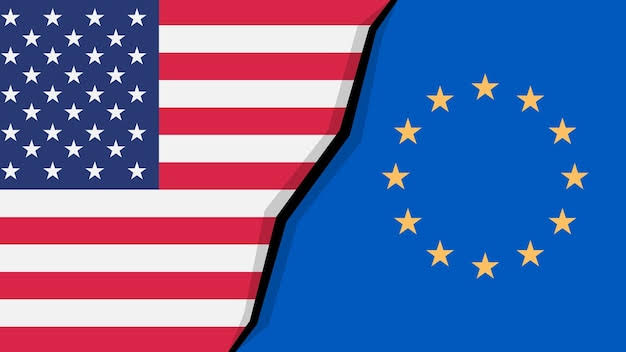Top officials at the European Union’s executive commission says they are pushing hard for a trade deal with the Trump administration to avoid a 50% tariff on imported goods. Trump had threatened to impose the tariffs on June 1, but has pushed back the deadline to July 9, repeating an oft-used tactic in his trade war, says AP.
What exactly does Trump want? What can Europe offer? Here are the key areas where the two side are squaring off.
Over and over, Trump has bemoaned the fact that Europe sells more things to Americans than it buys from Americans. The difference, or the trade deficit in goods, last year was 157 billion euros ($178 billion). But Europe says that when it comes to services — particularly digital services like online advertising and cloud computing — the US sells more than it buys and that lowers the overall trade deficit to 48 billion euros, which is only about 3% of total trade. The European Commission says that means trade is “balanced.”
One way to shift the trade in goods would be for Europe to buy more liquefied natural gas by ship from the US To do so, the EU could cut off the remaining imports of Russian pipeline gas and LNG. The commission is preparing legislation to force an end to those purchases — last year, some 19% of imports — by the end of 2027.
That would push European private companies to look for other sources of gas such as the US
Europe could buy more from US defense contractors as part of its effort to deter further aggression from Russia after the invasion of Ukraine, says Carsten Brzeski, global chief of macro at ING bank. If European countries did increase their overall defense spending — another of Trump’s demands — their voters are likely to insist that the purchases go to defense contractors in Europe, not America, said Stokes of the German Marshall Fund.
The EU could also reduce its 10% tax on foreign cars— one of Trump’s long-standing grievances against Europe.
The US has long complained about European regulations on food and agricultural products that keep out hormone-raised beef and chickens washed with chlorine. But experts are not expecting EU trade negotiators to offer any concessions at the bargaining table.
One of Trump’s pet peeves has been the value-added taxes used by European governments, a tax he says is a burden on US companies.
Economists say this kind of tax, used by some 170 countries, is trade-neutral because it applies equally to imports and exports. A value-added tax, or VAT, is paid by the end purchaser at the cash register but differs from sales taxes in that it is calculated at each stage of the production process. In both cases, VAT and sales tax, imports and exports get the same treatment. The US is an outlier in that it does not use VAT.
There is little chance countries will change their tax systems for Trump and the EU has ruled it out.
Trump’s approach to negotiations has involved threats of astronomical tariffs – up to 145% in the case of China – before striking a deal for far lower levels. In any case, however, the White House has taken the stance that it will not go below a 10% baseline.
Economists Oliver Rakau and Nicola Nobile of Oxford Economics wrote in a commentary Monday that if imposed, the 50% tariffs would reduce the collective economy of the 20 countries that use the euro currency by up to 1% next year and slash business investment by more than 6%.
The EU has offered the US a “zero for zero” outcome in which tariffs would be removed on both sides industrial goods including autos. Trump has dismissed that but EU officials have said it is still on the table.


